Special Report
Countries With the Largest Nuclear Stockpiles
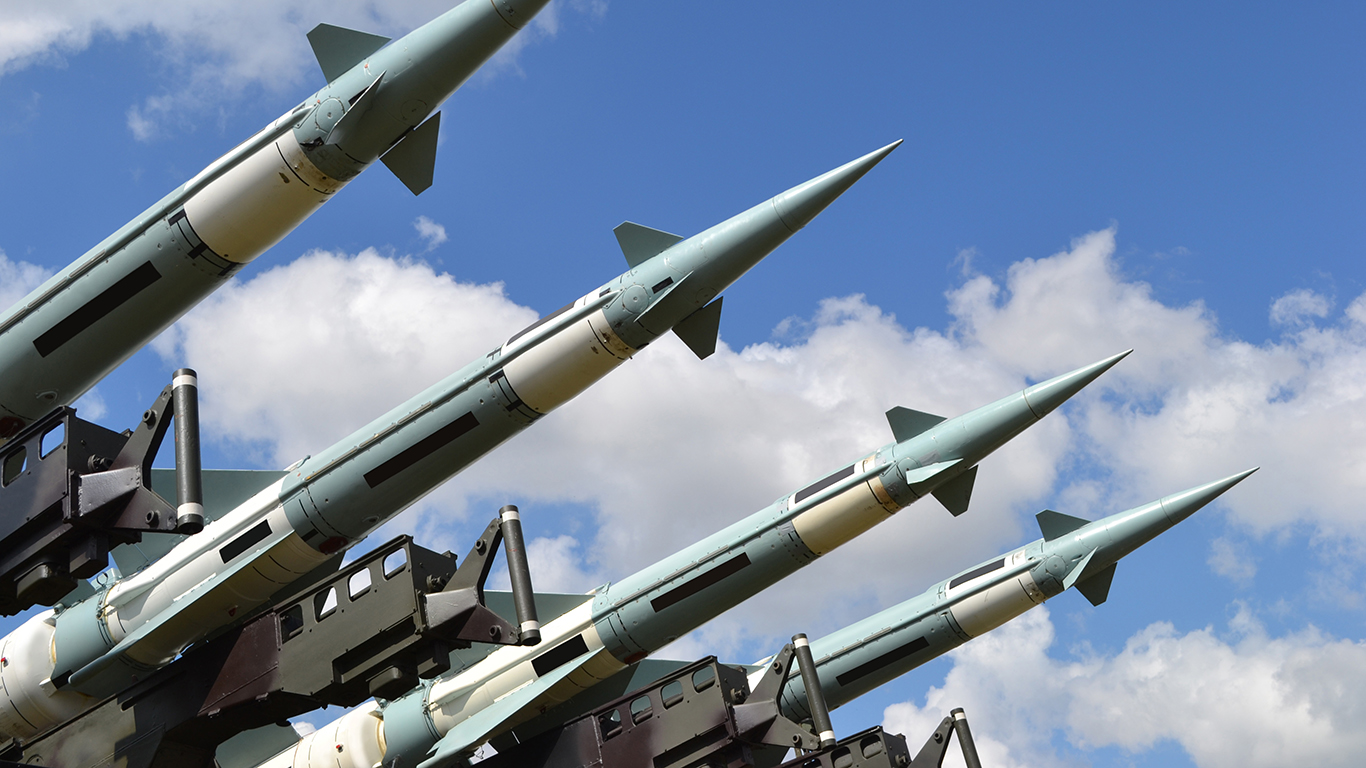
Published:
Last Updated:

Of all the collective problems facing the world today, nuclear proliferation ranks among the most dire and unpredictable. Currently, nine countries are known to be in possession of a total of 13,865 nuclear warheads — and maintaining control over those weapons and keeping other countries from developing them is a priority for the United States and its allies.
A nuclear weapon falling into the wrong hands or a miscommunication and inadvertent escalation between nuclear adversaries could be catastrophic. Of the 19 disasters that could end the world, less than half are man made, and nuclear war is one of them.
The number of nuclear weapons on the planet fell slightly last year, due largely to the continued dismantling of stockpiles in the United States and Russia — two powers that together possess over 90% of the world’s nuclear weapons. Still, every nuclear-armed country is modernizing its nuclear arsenals — and some countries are even expanding theirs.
24/7 Wall St. reviewed nuclear weapon stockpile estimates, released by the Stockholm International Peace Research Institute, to identify the countries with the largest nuclear stockpiles. The countries on this list have developed and maintained a nuclear arsenal in the interest of national security — and not surprisingly, military might is often a priority for them. In fact, several countries with the largest nuclear arsenals are also the countries spending the most on war.
Throughout history, the United States has been the only country to have used a nuclear weapon in combat, bombing Hiroshima and Nagasaki in Japan in 1945, at the end of WWII. South Africa is the only non-nuclear power to have once had a nuclear arsenal — building six warheads in the 1980s and dismantling them the following decade.
Click here to see the countries with the largest nuclear stockpiles.
To identify the countries with the largest nuclear stockpiles, 24/7 Wall St reviewed 2019 weapons inventory data provided by the Stockholm International Peace Research Institute, or SIPRI. For many nuclear powers, official inventory figures are state secrets, and some SIPRI figures are estimates based on expert analysis. Data on annual military expenditure, which also came from SIPRI, are for 2018 and are in current U.S. dollars. GDP in 2018 are also listed in current U.S. dollars and came from the World Bank.

9. North Korea
> Nuclear stockpile: 20-30 warheads
> Year of first nuclear test: 2006
> 2018 military spending: N/A
> 2018 GDP: N/A
North Korea, an authoritarian communist nation in Southeast Asia, has become a pariah state, largely because of its nuclear weapons program. In violation of a 1994 agreement with the United States, North Korea was secretly developing nuclear weapons for years, first declaring itself a nuclear power in 2003. Three years later, the country conducted a nuclear test — the first of many.
In early 2018, North Korea agreed to suspend nuclear testing and development and engage in peace talks with the United States. The talks yielded vague indications of a willingness to disarm. A second round of talks in 2019 ended at an impasse, with American officials refusing to repeal economic sanctions, and North Korean officials refusing to eliminate their nuclear stockpiles.
[in-text-ad]
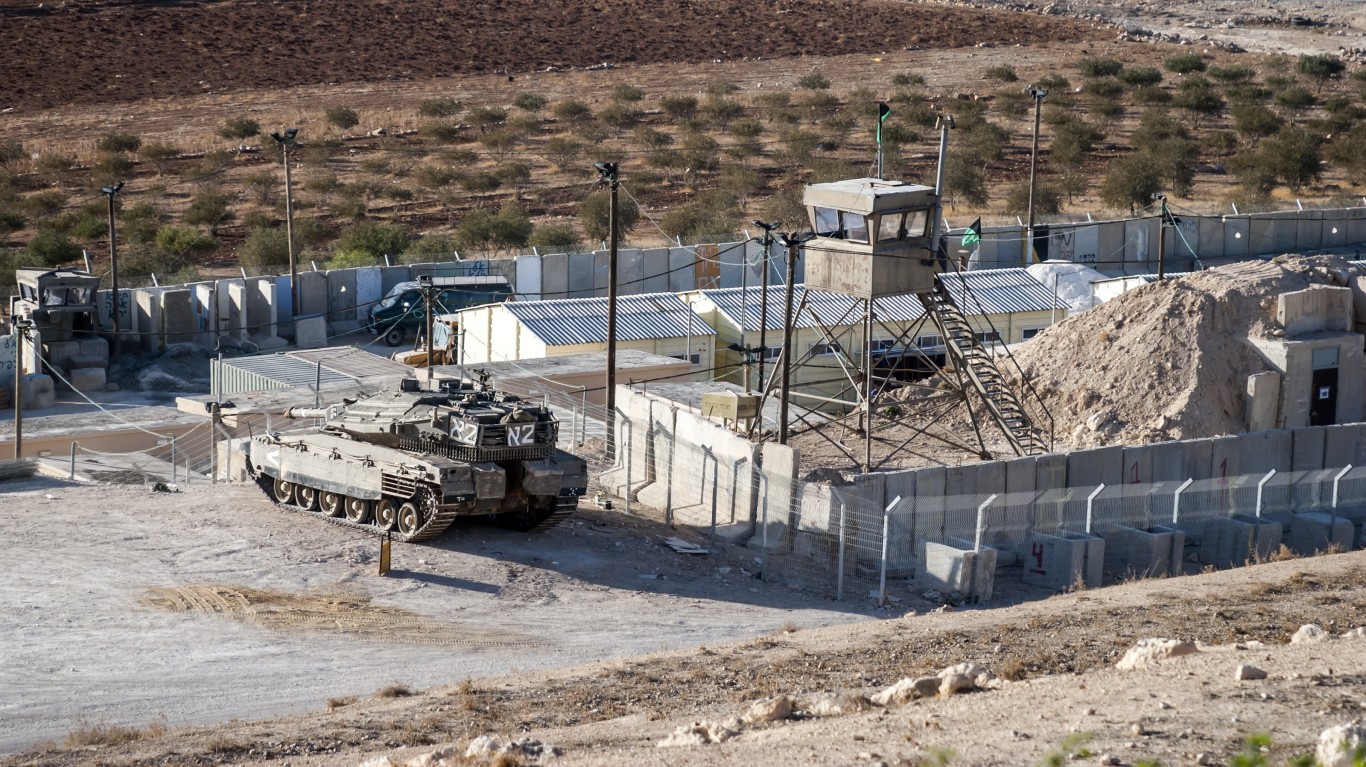
8. Israel
> Nuclear stockpile: 80-90 warheads
> Year of first nuclear test: N/A
> 2018 military spending: $15.9 billion
> 2018 GDP: $369.7 billion
The Israeli government adheres to a long standing policy of neither confirming nor denying possession of nuclear weapons. Declassified documents indicate the Middle Eastern country began developing nuclear weapons in the 1960s, and current estimates put Israel’s stockpile at 80-90 warheads — approximately 30 of which are gravity bombs, designed to be dropped by aircraft, and 50 that are attached to ballistic missiles. Unconfirmed reports suggest the country may also have additional warheads deployed on submarines, though Israeli officials deny the claim.
Currently, Israel is the only nuclear power in the Middle East. However, Iran, one of the country’s rivals in the region, continues to enrich uranium, reducing the time it would take it to develop a nuclear weapon.

7. India
> Nuclear stockpile: 130-140 warheads
> Year of first nuclear test: 1974
> 2018 military spending: $66.5 billion
> 2018 GDP: $2.7 trillion
India has the second-largest population in the world and the fourth-biggest military budget. One of only nine global nuclear powers, India conducted its first nuclear weapons test in 1974 and is believed to have as many as 140 nuclear weapons.
India has a tense relationship with its neighbor Pakistan, engaging in multiple conflicts since the two countries gained independence from Britain in 1947. Currently, both countries are thought to be increasing their nuclear stockpiles. India operates under a no-first-use policy in regard to nuclear weapons. Specifically, India is expanding its uranium enrichment capabilities and continues to improve both its land- and sea-based missile delivery systems.

6. Pakistan
> Nuclear stockpile: 150-160 warheads
> Year of first nuclear test: 1998
> 2018 military spending: $11.4 billion
> 2018 GDP: $312.6 billion
Pakistan has developed — and continues to develop — its nuclear arsenal and capabilities to deter aggression from its neighbor and rival, India. Though Pakistan conducted its first nuclear weapons test in 1998, 24 years after India, it is estimated it has as many as 160 warheads, about 20 more than India. Recently, Pakistan announced a test launch of a sea-based missile from a submarine. The country is also expanding its ground and air-launched warhead delivery systems.
[in-text-ad-2]
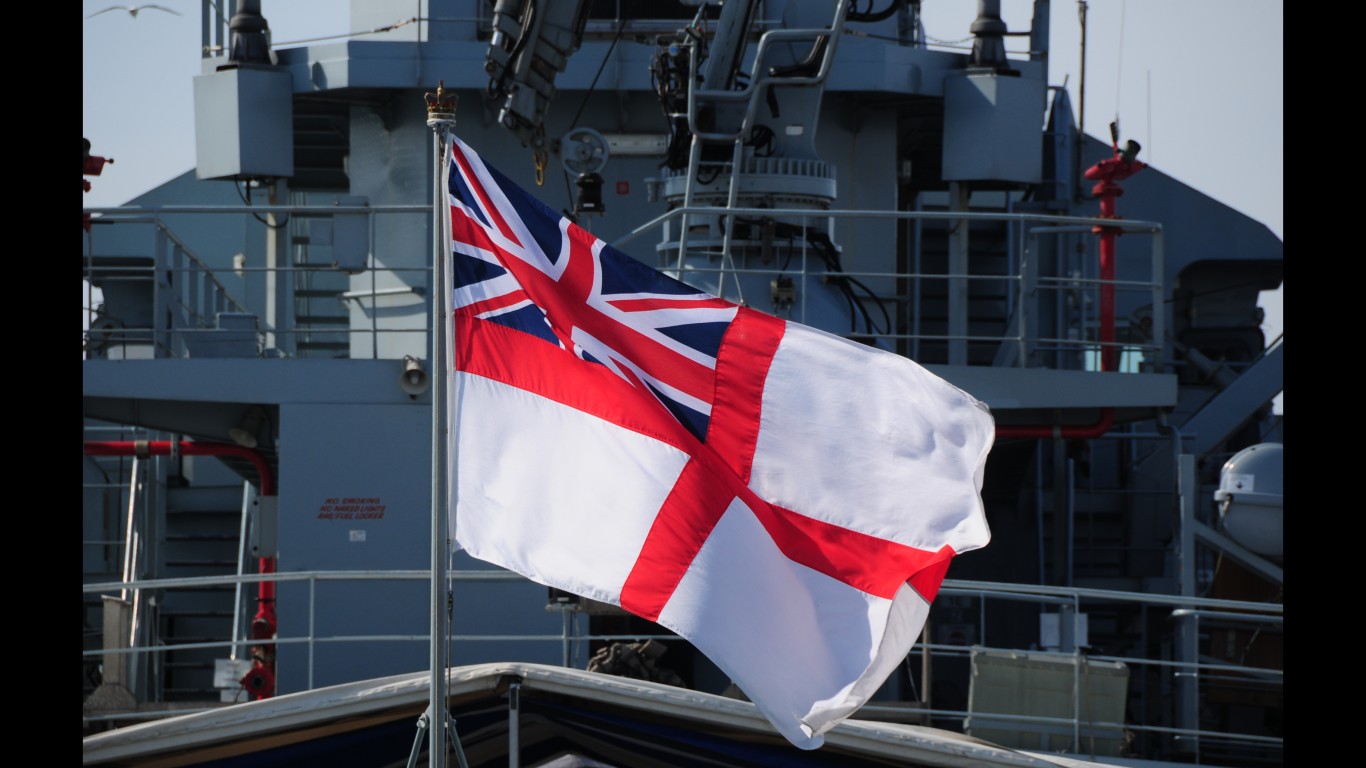
5. United Kingdom
> Nuclear stockpile: 200 warheads
> Year of first nuclear test: 1952
> 2018 military spending: $50.0 billion
> 2018 GDP: $2.8 trillion
Conducting its first test in 1952, the United Kingdom has been a nuclear power longer than every other country after the United States and Russia. Unlike countries such as China and Pakistan that are believed to be increasing their nuclear stockpiles, the United Kingdom is making strides to reduce its arsenal. Currently standing at about 200, the country has plans to decrease its stockpile to 180 warheads by the mid-2020s. Operational British warheads are primarily loaded onto submarines.

4. China
> Nuclear stockpile: 290 warheads
> Year of first nuclear test: 1964
> 2018 military spending: $250.0 billion
> 2018 GDP: $13.6 trillion
China’s military budget of $250 billion is the second largest of any country in the world, trailing only the military spending of the United States. The country’s nuclear stockpile of 290 warheads is the fourth largest in the world. China has a nuclear strategy of assured retaliation — the primary goal of which is deterrence — and as a result, it is continuously modernizing and expanding its arsenal. The improvements in its nuclear capabilities are largely in response to technological advances in strike and surveillance capabilities of the United States. China’s primary warhead delivery methods are land- and sea-based, though the country may also maintain limited air-strike capabilities.
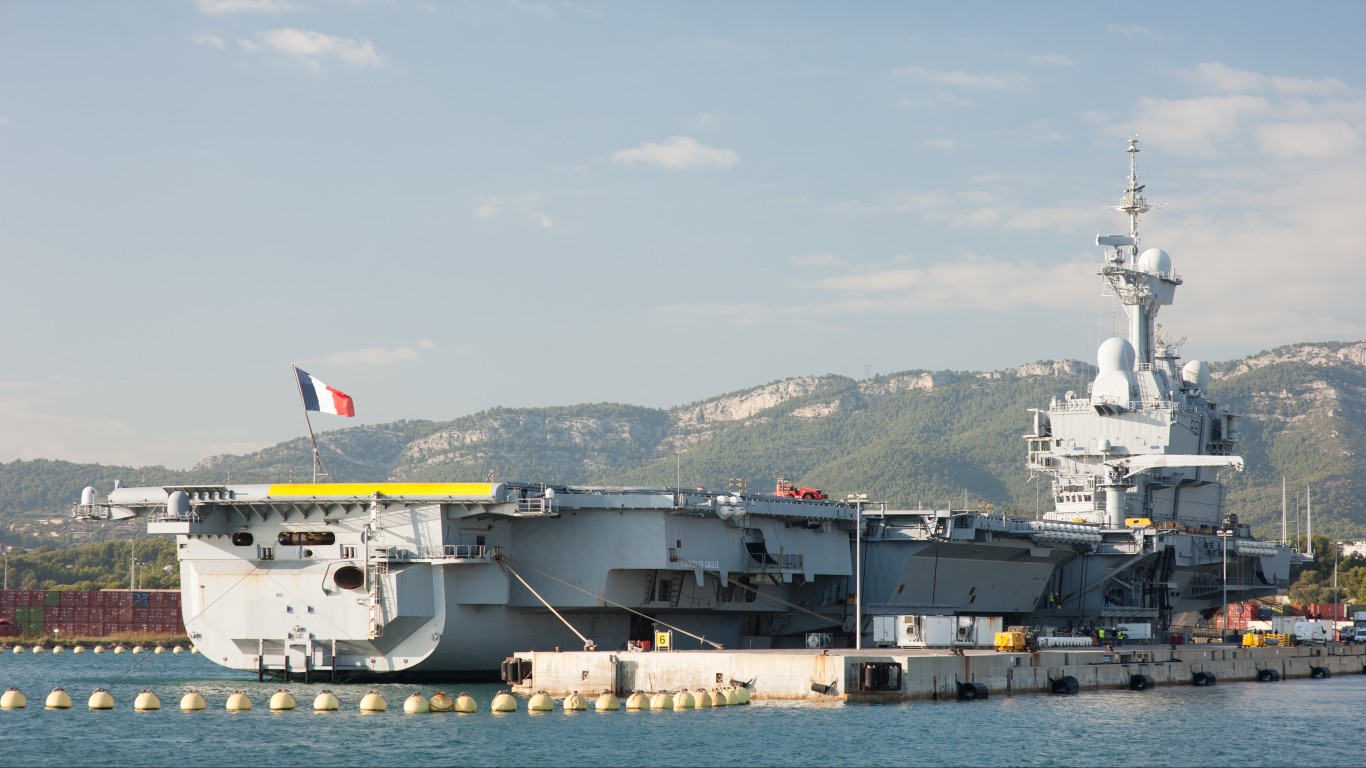
3. France
> Nuclear stockpile: 300 warheads
> Year of first nuclear test: 1960
> 2018 military spending: $63.8 billion
> 2018 GDP: $2.8 trillion
France has a stockpile of 300 nuclear warheads, 48 of which are earmarked for ballistic missiles that can be launched from submarines and 54 for air-launched cruise missiles. The French Navy has continuously had a submarine armed with nuclear warheads on patrol as a deterrent since 1972.
France’s annual military budget of $63.8 billion is the fifth largest in the world. In July 2018, French President Emmanuel Macron signed a law allocating $43.7 billion through 2025 to modernize the country’s nuclear arsenal.
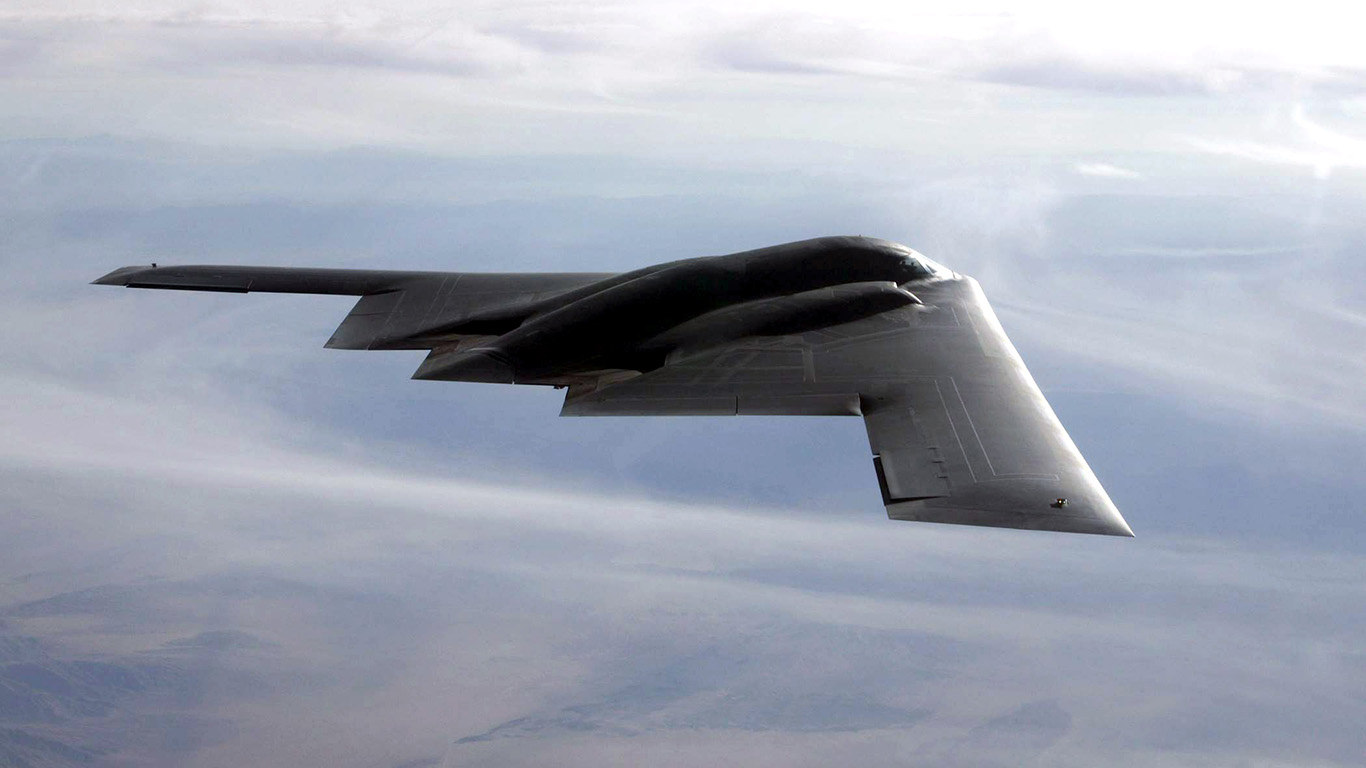
2. United States
> Nuclear stockpile: 6,185 warheads
> Year of first nuclear test: 1945
> 2018 military spending: $648.8 billion
> 2018 GDP: $20.5 trillion
The United States was the first country to develop nuclear weapons — and the only country to ever use nuclear weapons in combat. Today, the United States has an estimated 6,185 warheads, the second most of any country after Russia. The United States and Russia engaged in an arms race in the decades following World War II, each building up its nuclear arsenal throughout the Cold War. Under President Donald Trump, the United States is currently undergoing a nuclear modernization program that began under the Obama administration. Currently, the U.S. military has a fleet of 169 nuclear-capable heavy bomber aircraft, 450 land-based nuclear missile silos, and 14 Ohio class nuclear-armed submarines — eight to 10 of which are normally deployed at sea at any given time.
The United States also has far and away the largest military budget of any other country. Total U.S. military spending topped $648 billion in 2018, well more than double the $250 billion spent by China, the country with the second-largest military budget.

1. Russia
> Nuclear stockpile: 6,500 warheads
> Year of first nuclear test: 1949
> 2018 military spending: $61.4 billion
> 2018 GDP: $1.7 trillion
In the wake of WWII, which ended shortly after the United States used nuclear weapons in combat for the first and only time, the Soviet Union obtained blueprints for an atomic weapon through a network of spies. Following the country’s first nuclear test in 1949, the Soviet Union entered into an arms race with the United States, rapidly expanding its nuclear arsenal. Today, the Russian Federation has an estimated 6,500 warheads — though, about 2,170 are retired and soon to be dismantled.
In what is perceived to be an attempt to match the capabilities of the United States, Russia has a fleet of 10 nuclear-armed submarines. It also has 318 intercontinental ballistic missiles — capable of carrying a payload of up to 1,165 warheads — as well as a fleet of 68 bomber aircraft.
Want retirement to come a few years earlier than you’d planned? Or are you ready to retire now, but want an extra set of eyes on your finances?
Now you can speak with up to 3 financial experts in your area for FREE. By simply clicking here you can begin to match with financial professionals who can help you build your plan to retire early. And the best part? The first conversation with them is free.
Click here to match with up to 3 financial pros who would be excited to help you make financial decisions.
Have questions about retirement or personal finance? Email us at [email protected]!
By emailing your questions to 24/7 Wall St., you agree to have them published anonymously on a673b.bigscoots-temp.com.
By submitting your story, you understand and agree that we may use your story, or versions of it, in all media and platforms, including via third parties.
Thank you for reading! Have some feedback for us?
Contact the 24/7 Wall St. editorial team.